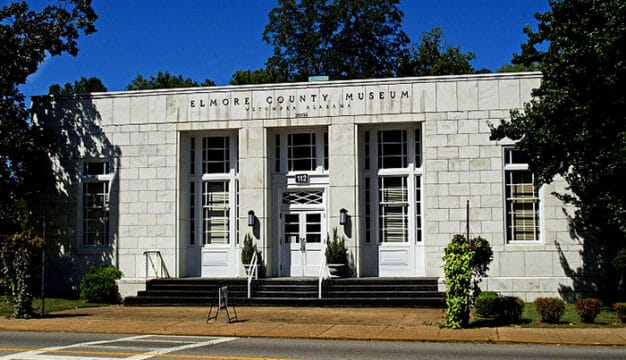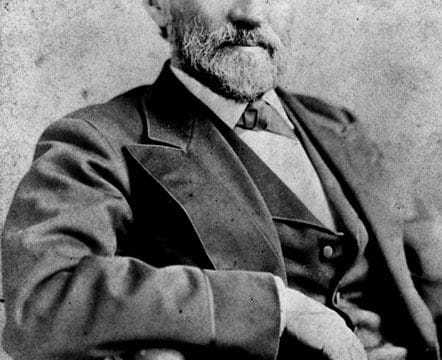Albert Stein
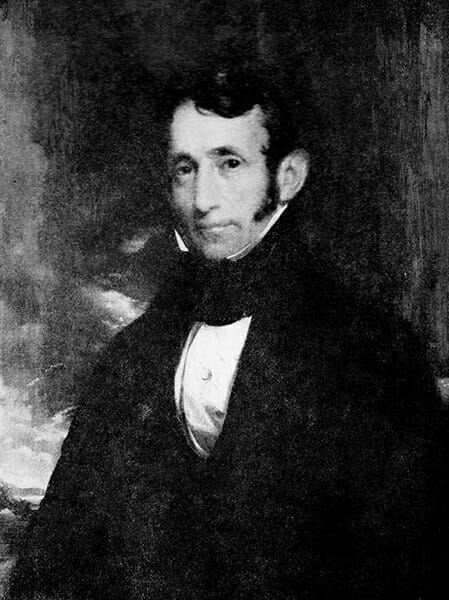 Albert Stein
Albert Stein (1785-1874), who resided in Spring Hill near Mobile, Mobile County, for the last three decades of his life, left a significant legacy in nineteenth-century American civil engineering. Stein designed municipal water works for a number of U.S. cities, including New Orleans, and pioneered concepts to make the mouth of the Mississippi River more navigable.
Albert Stein
Albert Stein (1785-1874), who resided in Spring Hill near Mobile, Mobile County, for the last three decades of his life, left a significant legacy in nineteenth-century American civil engineering. Stein designed municipal water works for a number of U.S. cities, including New Orleans, and pioneered concepts to make the mouth of the Mississippi River more navigable.
Born in Düsseldorf in present-day western Germany in 1785. Stein trained as a hydraulic engineer (concerned with the control of water and other fluids) and took a job near Düsseldorf in his early 20s. Stein emigrated to the United States, arriving in Philadelphia in 1816, at a time when America was emerging from the War of 1812 and was making major new investments in municipal, state, and national infrastructure. Few schools trained civil engineers in the United States at this time, leaving European engineers to fill the gap. Stein immediately impressed employers with his knowledge, and soon his skills were in great demand.
Stein followed the significant German migration to Cincinnati, Ohio, where he designed that city’s first municipal water works; he also made surveys for a canal from Cincinnati to Dayton. Building water works to provide cleaner drinking water became Stein’s principal occupation and an area where he distinguished himself nationally and even internationally. By 1824, he was living in Petersburg, Virginia, where he deepened the tidal section of the Appomattox River to improve shipping. He served as water works engineer for Lynchburg, Virginia, from 1828 to 1830 and designed a reservoir that was filled by pumping water from the James River to a point 245 feet above the river level and then distributing water throughout the city via gravity.
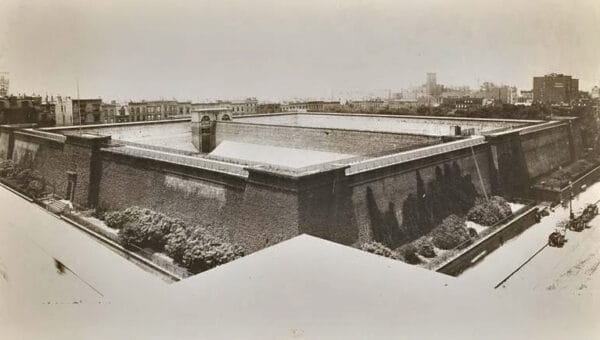 Croton Reservoir, New York
Stein next moved downriver to Richmond, Virginia. There, from 1830 to 1832, he designed and built the first water filtration systems in the nation (and one of the first in the modern world) as part of the city’s water works. Pumps fed James River water to a series of three gravel-and-sand-lined reservoirs that could hold more than a million gallons each; the turbid river water percolated through the filtering system, removing unwanted river sediment. This water first was used to provide fire safety through a system of pipes and fire plugs throughout the city, and by 1835, approximately 340 homes and tenements enjoyed gravity-fed filtered water. In 1832-1833, he designed and built a water works for Nashville, Tennessee, and consulted on the New York City water works that was completed in 1835. While in Nashville, Stein met and married Caroline Troost, 20 years his junior and the daughter of famed scientist and geologist Gerard Troost, on November 21, 1833. Census records from 1850 list seven children in their household.
Croton Reservoir, New York
Stein next moved downriver to Richmond, Virginia. There, from 1830 to 1832, he designed and built the first water filtration systems in the nation (and one of the first in the modern world) as part of the city’s water works. Pumps fed James River water to a series of three gravel-and-sand-lined reservoirs that could hold more than a million gallons each; the turbid river water percolated through the filtering system, removing unwanted river sediment. This water first was used to provide fire safety through a system of pipes and fire plugs throughout the city, and by 1835, approximately 340 homes and tenements enjoyed gravity-fed filtered water. In 1832-1833, he designed and built a water works for Nashville, Tennessee, and consulted on the New York City water works that was completed in 1835. While in Nashville, Stein met and married Caroline Troost, 20 years his junior and the daughter of famed scientist and geologist Gerard Troost, on November 21, 1833. Census records from 1850 list seven children in their household.
In 1833, Stein was hired by the Commercial Bank of New Orleans to redesign and build the city’s second major attempt at a water works. Because of the low elevation of the city, Stein had the city build a reservoir atop a 21-foot earthen mound of bricks and concrete one mile upriver from the city center, from which water flowed to the city via gravity-fed pipes. Stein lived in New Orleans until 1840.
Stein moved to Alabama‘s Gulf Coast permanently in 1840. That same year, he leased and improved a small water works in Spring Hill and formed the Stein Water Company, which supplied drinking water to Mobile until 1886. Stein also designed and supervised the building of St. Paul’s Episcopal Church in Spring Hill.
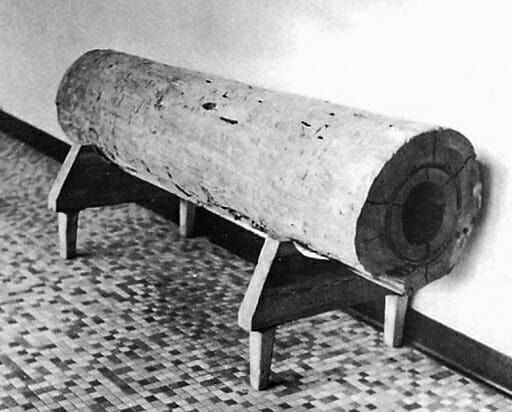 1840 City Water Pipe
After moving to Mobile, Stein concentrated on improving navigation on the Mississippi River, especially where the river emptied into the Gulf of Mexico. As early as 1837, Stein had proposed engineering solutions to clear the mouth of the Mississippi to allow for easier shipping access. Stein insisted that if the river could be straightened at the mouth and the full gravitational force of the current brought to bear, the river would naturally keep sandbars and other obstructions from forming. Although Stein had the support of banker and New Orleans Chamber of Commerce president Samuel J. Peters, it was not until 1850, after the Sauvé’s Crevasse flood of May 1849 in New Orleans, that the U.S. Army Corps of Engineers paid serious attention to developing a comprehensive engineering plan for the Mississippi. The Corps adapted Stein’s ideas to use bigger and stronger levees to confine the river and to straighten the river at its mouth to quicken the flow.
1840 City Water Pipe
After moving to Mobile, Stein concentrated on improving navigation on the Mississippi River, especially where the river emptied into the Gulf of Mexico. As early as 1837, Stein had proposed engineering solutions to clear the mouth of the Mississippi to allow for easier shipping access. Stein insisted that if the river could be straightened at the mouth and the full gravitational force of the current brought to bear, the river would naturally keep sandbars and other obstructions from forming. Although Stein had the support of banker and New Orleans Chamber of Commerce president Samuel J. Peters, it was not until 1850, after the Sauvé’s Crevasse flood of May 1849 in New Orleans, that the U.S. Army Corps of Engineers paid serious attention to developing a comprehensive engineering plan for the Mississippi. The Corps adapted Stein’s ideas to use bigger and stronger levees to confine the river and to straighten the river at its mouth to quicken the flow.
Stein promoted his engineering ideas about the Mississippi River in more than 20 articles to De Bow’s Review (the southern nationalist and pro-business journal published in New Orleans) and in self-published pamphlets. In the early 1870s, he also completed a study solicited by the town of Galveston, Texas, on ways to open and improve their harbor for shipping. Stein died in 1874 and is buried in the Spring Hill Graveyard.
Additional Resources
Baker, M. N. The Quest for Pure Water: The History of Water Purification from the Earliest Records to the Twentieth Century. New York: American Water Works Association, Inc., 1948.
Koeppel, Gerard T. Water for Gotham: A History. Princeton, N.J.: Princeton University Press, 2000.
Kolb, Carolyn Goldsby. “At the Confluence of Science and Power: Water Struggles of New Orleans in the Nineteenth Century.” Ph.D. dissertation, University of New Orleans, 2006.
Pabis, George S. “Subduing Nature through Engineering: Caleb G. Forshey and the Levees-only Policy, 1851-1881,” in Craig Colten, ed., Transforming New Orleans and Its Environs. (Pittsburgh, PA: University of Pittsburgh Press, 2000), 64-83.
Young, Earle B. Galveston and the Great West. College Station: Texas A&M University Press, 1997.
